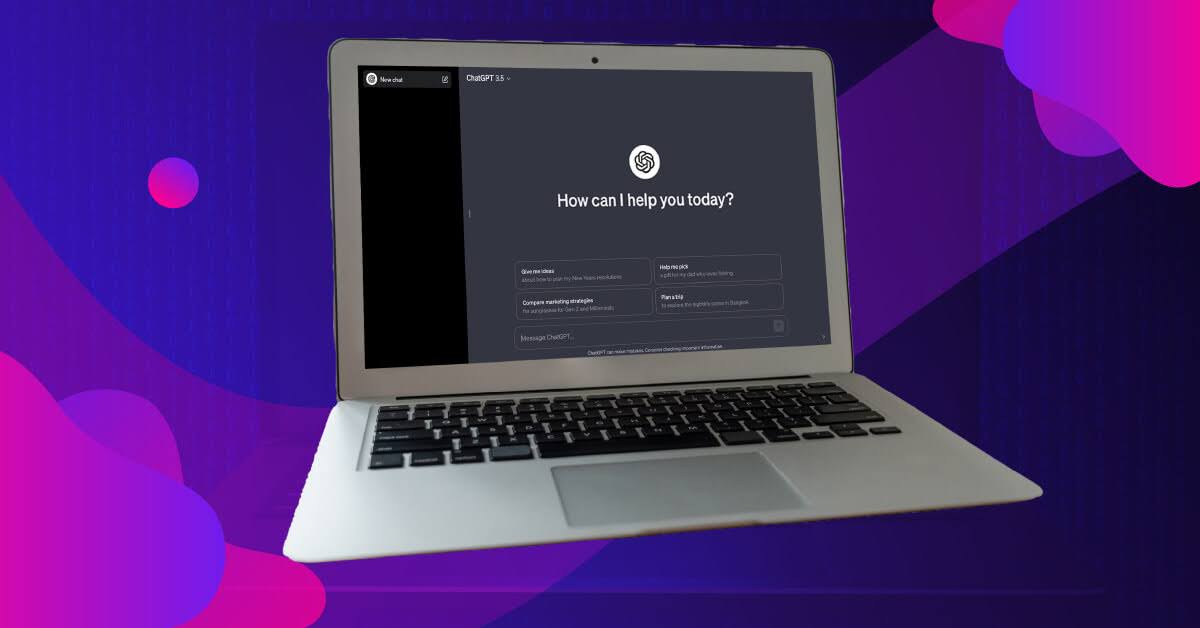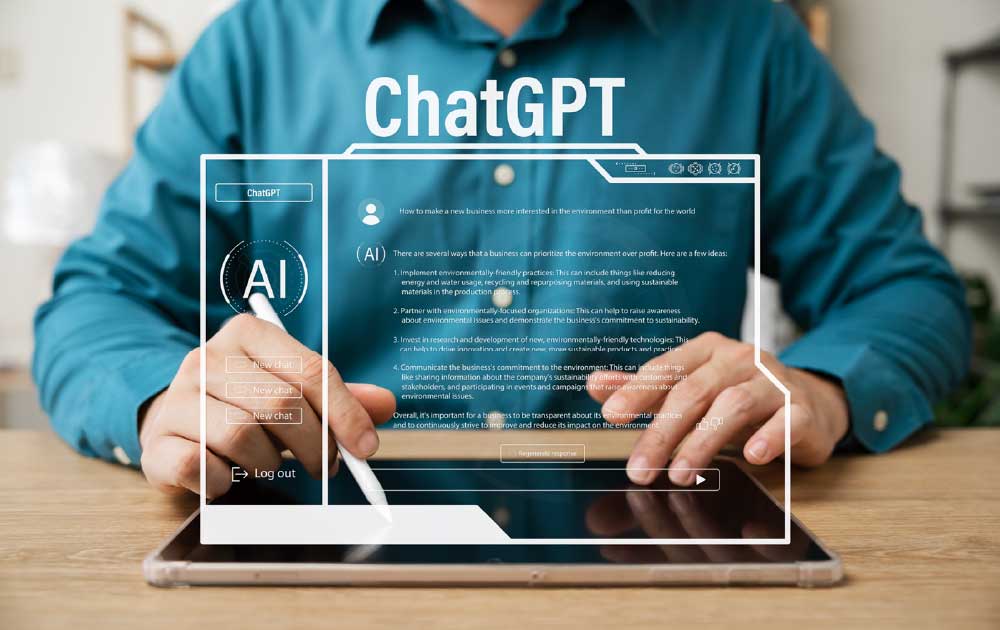
There are hundreds, if not thousands of tools to help you run your business. But none comes close to ChatGPT: it’s free, efficient, and quick. This AI tool can help you with market research, content creation, customer support, and more. But it’s not always easy to get this tool to output exactly what you need. So here’s an in-depth guide on how to use ChatGPT for marketing.
Table of Contents
- Crafting Compelling Marketing Copy with ChatGPT
- Personalizing Customer Interactions with ChatGPT
- Generating Creative Ideas & Campaign Concepts with ChatGPT
- Optimizing SEO with ChatGPT
- Audience Insights and Market Research with ChatGPT
- Measuring Success: KPIs and Metrics
Crafting Compelling Marketing Copy with ChatGPT: Emails, Social Media Posts, and Advertisements
Writing compelling ad copy can be laborious and time-consuming. With ChatGPT, it’s quick, easy, and straightforward. While it isn’t perfect, it can still produce good content, and when you add that human touch, what you have is gold. Here’s how to use this AI tool to write marketing copy for emails, social media, and advertising:
- Getting Ideas for A/B Testing: Ask ChatGPT to outline several variations for A/B testing, then have it evaluated for audience resonance.
Drafting Your Email Content: Provide an overview of your email campaign objectives and let ChatGPT draft the initial email copy.
- Creating Content for Social Media: Describe the purpose and context of your social media posts, then request engaging and shareable content.
- Ad Copywriting: Specify your brand’s key selling points and unique selling propositions and ask it to craft concise and persuasive ad copy.
- Building Your Story and Narrative: Provide the necessary elements for a brand narrative; ask it for help in generating a compelling story.
Addressing Objections: Share common objections; request ChatGPT to provide persuasive responses.
If you want to know more about how to write ChatGPT prompts for marketing, read this article.
Personalizing Customer Interactions with ChatGPT: Chatbots and Automated Messaging

Personalization is crucial to business success because it drives performance and better customer outcomes. You can use ChatGPT to provide tailored customer interactions with chatbots and automated messaging. Here’s how:
- Customer Segmentation: Identify key segments of your customers and use ChatGPT to analyze their characteristics and what makes them unique.
- Collecting and Using Customer Data: Collect and use customer data to craft personalized interactions.
- Dynamic Responses: Program your chatbot to respond based on customer input and context.
- Personalized Greetings: Utilize personalized greetings by addressing your customers by their names.
- Product Recommendations: Ask ChatGPT for personalized product recommendations based on customer profiles.

- Customized Content Delivery: Customize content delivery based on your customers’ preferences and interests.
- Use Adaptive Tone and Language: Train your chatbot to adapt its tone and language to match individual customer communication styles.
- Interactive Surveys and Feedback: Incorporate interactive surveys to get feedback on customer preferences and needs.
- Contextual Understanding: Improve the chatbot’s contextual understanding to maintain continuity in conversations.
- Continuous Learning and Improvement: Implement mechanisms to continue learning from customer interactions and refine strategies based on feedback.
Generating Creative Ideas and Campaign Concepts with ChatGPT

If you find yourself struggling to come up with creative ideas and concepts for your next campaign, ChatGPT can help you. Here’s how:
- Set goals and objectives: Define your campaign’s purpose.
- Write a Specific Prompt: Create a detailed prompt with your campaign theme and target audience.
- Craft Key Messaging: Ask ChatGPT for key messages and taglines with your campaign.
- Describe Visual Concepts: Ask ChatGPT for suggestions for images, graphics, or video. This is where Penji’s design team comes in, helping you bring to life your ideas for branded visuals.
- Include Elements of Storytelling: Request ChatGPT to weave a compelling narrative for your campaign.

- Integrate Trends: Ask ChatGPT to include current trends or cultural references in the campaign.
- Cross-Channel Integration: Ask for ideas that you can use for various platforms and will result in a unified and harmonious campaign.
- Explore Interactive Concepts: Your campaigns will benefit from interactive concepts. Ask ChatGPT to suggest ideas that will engage your audience.
- Specify Your Demographics: Describe your target audience and ask the tool to recommend tailored ideas that resonate with them.
- Ask for A/B Testing Ideas: Get help finding ideas for A/B testing to see if your campaigns are working. This allows you to refine them and get rid of those not performing.
Optimizing SEO with ChatGPT: Content Creation and Keyword Research

A considerable part of marketing involves creating content that compels people to do your desired outcome. Sadly, it’s not as easy as writing an article and waiting for readers to come. You have to put your content right in front of your target audience. This is what SEO is all about, and here’s how you can use ChatGPT to optimize your efforts:
For Content Creation
To get high-quality content: Give ChatGPT details about your topic, ensuring its relevance, clarity, and the natural integration of your keywords.
To create an optimized content structure: Request ChatGPT to write optimized headings, subheadings, and long-form content. To make it more effective, add relevant images with alt text.
For Use in Keyword Research
Seed and long-tail keywords: Provide ChatGPT with your seed keywords to get suggestions for long-tail keywords. The tool can also give you your competitors’ keywords and identify potential gaps.
Local and trend-based keywords: Request ChatGPT to give you keywords based on your location and what’s trending.
For the Integration of SEO Best Practices
Meta tags, descriptions, and URLs: Ask ChatGPT to generate optimized meta tags, descriptions, and SEO-ready URLs.
Internal linking and readability: Use the tool to build internal linking strategies and get help with content readability and structure.
Review and Editing
Quality assurance and keyword density: Ask ChatGPT to review and refine your content’s quality. Use it to evaluate your keyword density to avoid being penalized for keyword stuffing.
Continuous Optimization
Regular updates: Schedule a routine for updating your content, ask ChatGPT for changes in the industry, and ask it for insights to continue your adaptation to changes in algorithms.
Audience Insights and Market Research with ChatGPT: Analyzing Trends and Customer Sentiment

To craft the most suitable marketing strategies, you need to get your audience’s insights and research the market. This involves analyzing trends and gauging customer sentiment. You can use ChatGPT for this by doing the following:
- Define your research goals: Create an outline of your clear objectives, whether it’s identifying trends, understanding customer sentiment, or gathering insights into different aspects of the market.
- Write detailed prompts: Once you have defined your objectives, craft prompts related to them specifying your industry, products, or services you want to get insights on.
- Trend analysis: Ask ChatGPT to gather insights on current market trends, shifts, emerging technologies, or customer preferences. You can also ask the AI to explore innovations in the market and provide you with information about your competitors. This can help you analyze their strategies and understand where they’re excelling and where they might be lacking.
- Analyzing customer sentiment: Request ChatGPT to get insights on how your customers see your brand and competition. Look into product or service reviews on different platforms and ask the app for sentiment analysis. You can input a sample review and let the tool analyze it.
- Insights into customer behavior: To understand the many factors influencing customers’ purchasing decisions and preferences, ask ChatGPT to analyze their buying trends, habits, and consumption patterns.

- Analyzing demographics: Use the tool to understand your customers’ age groups, locations, and other relevant factors. ChatGPT is also an excellent tool for creating audience segments to explore the many opportunities for targeted marketing.
- Product/service feedback: Input sample feedback, then ask the tool to analyze these. Ask it to give you insights on where to improve and add features that the customers will appreciate.
- Survey analysis: Ask ChatGPT to generate a questionnaire for each objective to gather customer feedback. Ask it to analyze the data gathered and let that guide you in making your business decisions.
- Competitive landscape analysis: Ask ChatGPT to do a SWOT analysis on your business and competitors to understand strengths, weaknesses, opportunities, and threats. Request strategies to differentiate you from the competition and enhance your unique selling proposition.
- Iterative analysis: Use ChatGPT to continuously analyze trends and sentiment by establishing an iterative process for refining your research.
Measuring Success: KPIs and Metrics for Evaluating ChatGPT’s Impact on Marketing Campaigns

To check if your marketing efforts using ChatGPT are bearing fruits, you need to define key performance indicators (KPIs) and metrics. Below are some vital KPIs and metrics you may want to use:
- Objective Alignment
- Metrics: The percentage of your marketing objectives that align with the suggestions given by ChatGPT.
- Engagement and Interaction
- Metrics: Click-through rates, time spent on ChatGPT-generated content, and other interaction levels.
- Conversion Rates
- Metrics: The increase in the percentage of conversions attributed to the content the tool generated.
- Lead Generation
- Metrics: The number of leads generated through the ChatGPT-driven campaigns.
- Content Effectiveness
- Metrics: Gather user feedback on the relevance and quality of ChatGPT-crafted content.

- Audience Satisfaction
- Metrics: The survey and feedback scores that reflect your audience’s satisfaction with the campaigns that ChatGPT suggested.
- Cost Efficiency
- Metrics: The impressions, reach, and visibility of the content that ChatGPT generated.
- SEO Performance
- Metrics: The rankings, organic traffic, and backlinks generated by ChatGPT.
- Time Savings
- Metrics: The time you saved in content creation versus the traditional methods.
Final Thoughts
Marketing is a complex but essential endeavor for every business owner. If you’re looking for a tool to help you make it fast and efficient, it’s already here. This guide on how to use ChatGPT for marketing will guide you through the various tasks that entail creating marketing strategies.
About the author

Celeste Zosimo
Celeste is a former traditional animator and now an SEO content writer specializing in graphic design and marketing topics. When she's not writing or ranking her articles, she's being bossed around by her cat and two dogs.
Table of Contents
- Crafting Compelling Marketing Copy with ChatGPT: Emails, Social Media Posts, and Advertisements
- Personalizing Customer Interactions with ChatGPT: Chatbots and Automated Messaging
- Generating Creative Ideas and Campaign Concepts with ChatGPT
- Optimizing SEO with ChatGPT: Content Creation and Keyword Research
- Audience Insights and Market Research with ChatGPT: Analyzing Trends and Customer Sentiment
- Measuring Success: KPIs and Metrics for Evaluating ChatGPT’s Impact on Marketing Campaigns
- Final Thoughts










